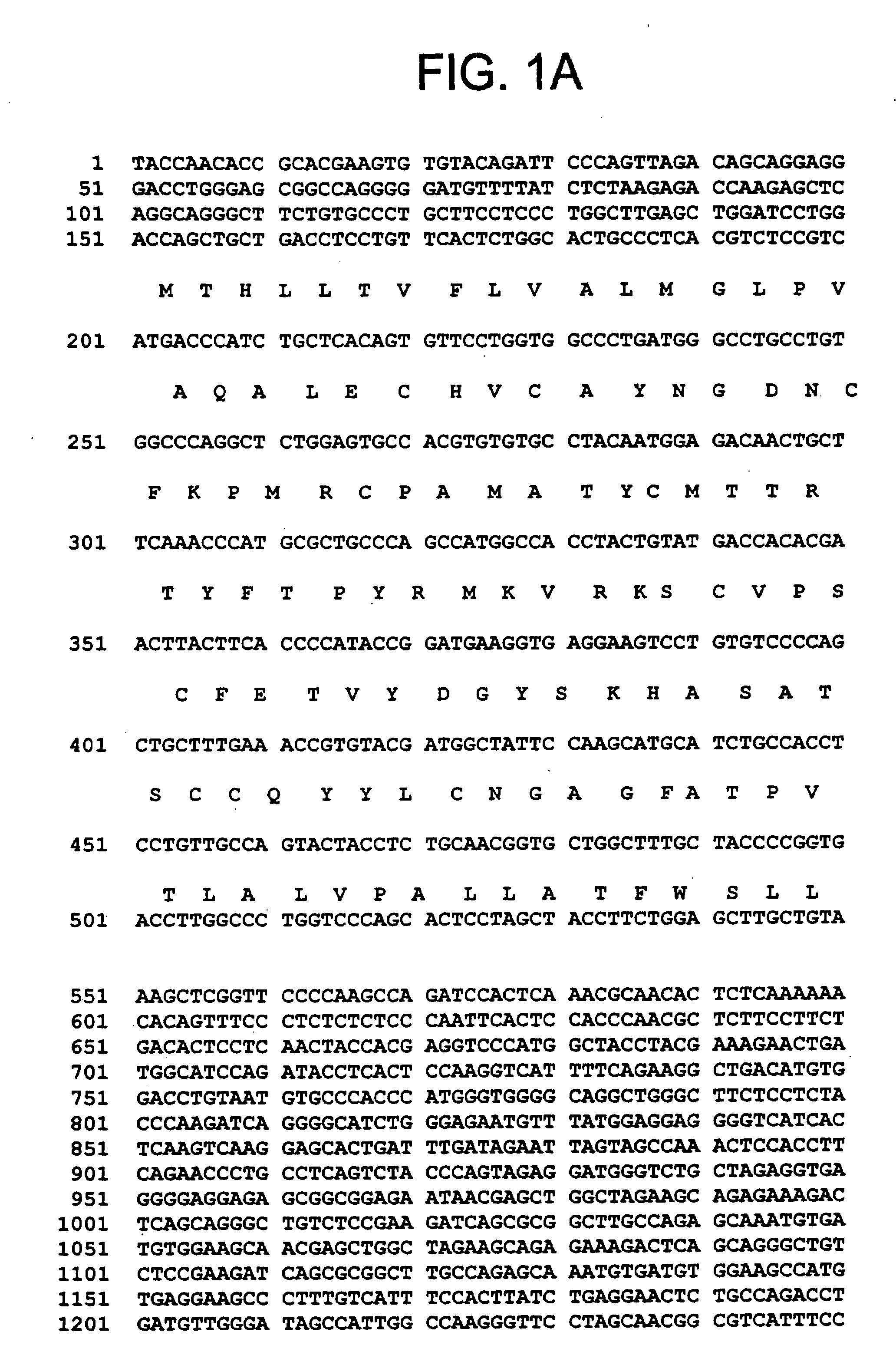Lynx, a novel family of receptor ligands in the central nervous system, corresponding nucleic acids and proteins and uses thereof
a central nervous system and receptor ligand technology, applied in the direction of immunoglobulins, peptides, drugs against animals/humans, etc., can solve the problems of insufficient physiological function of each receptor subtype, paralysis and death, etc., to improve the activity of lynx polypeptide, improve the management of shortcomings and non-specific side effects, and alter the adverse effects
- Summary
- Abstract
- Description
- Claims
- Application Information
AI Technical Summary
Benefits of technology
Problems solved by technology
Method used
Image
Examples
example 1
Cloning and Characterization of Lynx1
[0218]The correct circuitry of the mature brain requires precise synaptic connections between afferent cells and their target neurons. This is established during the final phase of neuronal development by pruning of supernumerary, immature synaptic contacts and segregation of afferent inputs to distinct target cell subdomains (Katz, L. C. & Shatz, C. J. (1996) Science 274, 1133-1138). The molecular mechanisms participating in this final phase of synaptic maturation are largely unknown. This Example details the identification of a novel ligand / receptor pair localized to synaptic partners late in neuronal development. The ligand, Lynx1, is a new member of the Ly-6 / α-bungarotoxin gene superfamily whose members contain a structural receptor binding motif characteristic of the neuroactive snake venom toxins, termed the three-fingered or toxin fold. Lynx1 is neuronal cell surface protein, specifically a GPI-anchored protein, and is expressed in the dee...
example 2
Genetic Analyses of Lynx1 Function in Motor Performance and Learning
[0231]The experimental objective of the following studies was to utilize genetic analyses to determine the function of the Lynx1 gene and its encoded protein in motor performance and learning. The initial cloning and characterization of the Lynx1 gene has indicated an involvement of Lynx1 in receptor interactions at specific synapses. The late up-regulation of this gene occurs during a period of synaptic instability, when circuits are maturing from crude initial circuitry by an experience-dependent mechanism. Structural analysis and binding assays show that Lynx1 interacts with its receptor in neurons presynaptic to Lynx1-expressing cells, in particular inhibitory inputs impinging onto integrative output neurons. These data indicate that Lynx1 has an important role in the weighting of inhibitory inputs in these circuits. Alterations in dosage of Lynx1, then, might have an effect on synaptic transmission, and weighti...
example 3
Lynx1 Binds to the Alpha Subunit of Nicotinic Acetylcholine Receptors and Enhances Acetylcholine-Mediated Effects
[0248]As described above, the transgenic animal data of Example 2 is consistent with an involvement of Lynx1 in cholinergic signaling which occurs throughout the cerebellum, particularly in the stellate and basket cells. Evidence in the literature has demonstrated that cholinergic inputs effect learning in the cerebellum and other brain regions. The likelihood that the Lynx1 gene acts through some receptor mechanism to alter the general excitability of inhibitory neurons is further shown above in Example 1. In addition, in Example 1, the far western analysis showed that Lynx / FC and Lynx / AP fusion proteins specifically recognized a single band of approximately 50 kD in cerebellar extracts. Interestingly, this size corresponds to that of the alpha subunit of nicotinic acetylcholine receptors, and as detailed above, aBTx has been shown to bind to the alpha subunit. The 50 kD...
PUM
| Property | Measurement | Unit |
|---|---|---|
| molecular weight | aaaaa | aaaaa |
| Tm | aaaaa | aaaaa |
| temperature | aaaaa | aaaaa |
Abstract
Description
Claims
Application Information
 Login to View More
Login to View More - R&D
- Intellectual Property
- Life Sciences
- Materials
- Tech Scout
- Unparalleled Data Quality
- Higher Quality Content
- 60% Fewer Hallucinations
Browse by: Latest US Patents, China's latest patents, Technical Efficacy Thesaurus, Application Domain, Technology Topic, Popular Technical Reports.
© 2025 PatSnap. All rights reserved.Legal|Privacy policy|Modern Slavery Act Transparency Statement|Sitemap|About US| Contact US: help@patsnap.com



